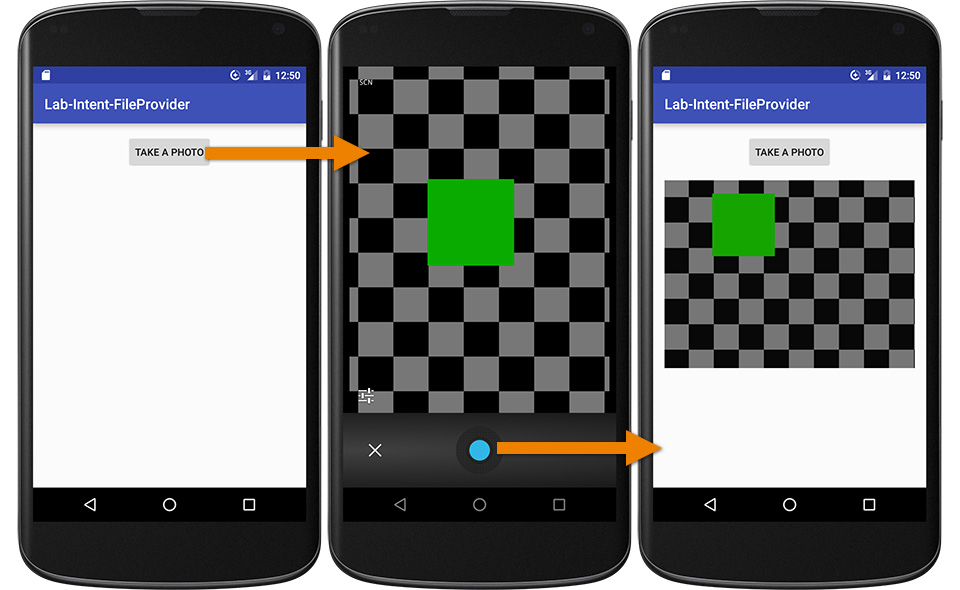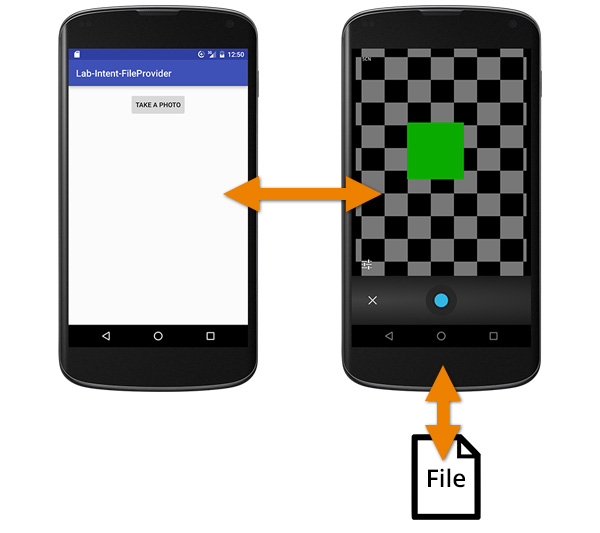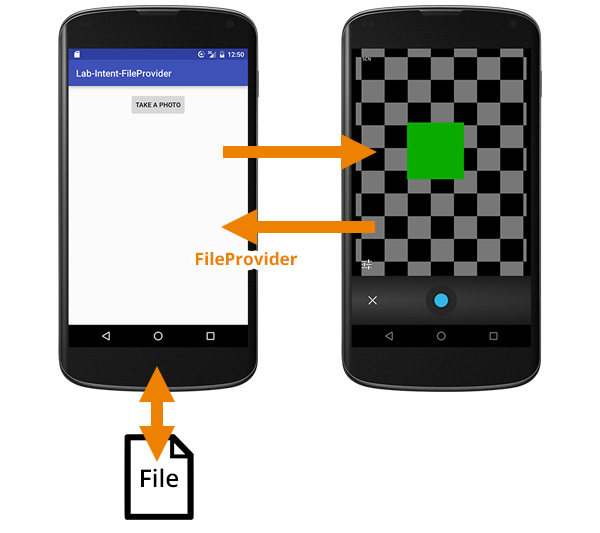Android Nougat is almost be publicly released. And as an Android developer, we need to prepare ourself to adjust targetSdkVersion to the latest one, 24, to let everything works perfectly on the newest release of Android.
And as always, everytime we adjust targetSdkVersion, we need to check and make sure that every single part of our code works perfectly fine. If you just simply change the number, I could say that your application is taking a high risk of crashing or malfunction. In this case, when you change your app's targetSdkVersion to 24, we need to check that every single function works flawlessly on Android Nougat (24).
And this is one of the checklist you need to mark done before releasing your new version. There is one big security change on Android N like quoted below:
Passingfile://URIs outside the package domain may leave the receiver with an unaccessible path. Therefore, attempts to pass afile://URI trigger aFileUriExposedException. The recommended way to share the content of a private file is using theFileProvider.
Summarily, file:// is not allowed to attach with Intent anymore or it will throw FileUriExposedException which may cause your app crash immediately called.
This blog will talk about this issue and also about the solution how to make it work on Android N.
Real example with a crashing problem
You may be curious which situation that can really cause the problem. So to make it be easy to you all, let me show you a real usage example that causes crashing. The easiest example is the way we take a photo through Intent with ACTION_IMAGE_CAPTURE type. Previously we just pass the target file path with file:// format as an Intent extra which works fine on Android Pre-N but will just simply crash on Android N and above.
Here is the code. Please note that you can find and download it from GitHub.
@RuntimePermissions
public class MainActivity extends AppCompatActivity implements View.OnClickListener {
private static final int REQUEST_TAKE_PHOTO = 1;
Button btnTakePhoto;
ImageView ivPreview;
String mCurrentPhotoPath;
@Override
protected void onCreate(Bundle savedInstanceState) {
super.onCreate(savedInstanceState);
setContentView(R.layout.activity_main);
initInstances();
}
private void initInstances() {
btnTakePhoto = (Button) findViewById(R.id.btnTakePhoto);
ivPreview = (ImageView) findViewById(R.id.ivPreview);
btnTakePhoto.setOnClickListener(this);
}
/////////////////////
// OnClickListener //
/////////////////////
@Override
public void onClick(View view) {
if (view == btnTakePhoto) {
MainActivityPermissionsDispatcher.startCameraWithCheck(this);
}
}
////////////
// Camera //
////////////
@NeedsPermission(Manifest.permission.WRITE_EXTERNAL_STORAGE)
void startCamera() {
try {
dispatchTakePictureIntent();
} catch (IOException e) {
}
}
@OnShowRationale(Manifest.permission.WRITE_EXTERNAL_STORAGE)
void showRationaleForCamera(final PermissionRequest request) {
new AlertDialog.Builder(this)
.setMessage("Access to External Storage is required")
.setPositiveButton("Allow", new DialogInterface.OnClickListener() {
@Override
public void onClick(DialogInterface dialogInterface, int i) {
request.proceed();
}
})
.setNegativeButton("Deny", new DialogInterface.OnClickListener() {
@Override
public void onClick(DialogInterface dialogInterface, int i) {
request.cancel();
}
})
.show();
}
@Override
protected void onActivityResult(int requestCode, int resultCode, Intent data) {
super.onActivityResult(requestCode, resultCode, data);
if (requestCode == REQUEST_TAKE_PHOTO && resultCode == RESULT_OK) {
// Show the thumbnail on ImageView
Uri imageUri = Uri.parse(mCurrentPhotoPath);
File file = new File(imageUri.getPath());
try {
InputStream ims = new FileInputStream(file);
ivPreview.setImageBitmap(BitmapFactory.decodeStream(ims));
} catch (FileNotFoundException e) {
return;
}
// ScanFile so it will be appeared on Gallery
MediaScannerConnection.scanFile(MainActivity.this,
new String[]{imageUri.getPath()}, null,
new MediaScannerConnection.OnScanCompletedListener() {
public void onScanCompleted(String path, Uri uri) {
}
});
}
}
@Override
public void onRequestPermissionsResult(int requestCode, String[] permissions, int[] grantResults) {
super.onRequestPermissionsResult(requestCode, permissions, grantResults);
MainActivityPermissionsDispatcher.onRequestPermissionsResult(this, requestCode, grantResults);
}
private File createImageFile() throws IOException {
// Create an image file name
String timeStamp = new SimpleDateFormat("yyyyMMdd_HHmmss").format(new Date());
String imageFileName = "JPEG_" + timeStamp + "_";
File storageDir = new File(Environment.getExternalStoragePublicDirectory(
Environment.DIRECTORY_DCIM), "Camera");
File image = File.createTempFile(
imageFileName, /* prefix */
".jpg", /* suffix */
storageDir /* directory */
);
// Save a file: path for use with ACTION_VIEW intents
mCurrentPhotoPath = "file:" + image.getAbsolutePath();
return image;
}
private void dispatchTakePictureIntent() throws IOException {
Intent takePictureIntent = new Intent(MediaStore.ACTION_IMAGE_CAPTURE);
// Ensure that there's a camera activity to handle the intent
if (takePictureIntent.resolveActivity(getPackageManager()) != null) {
// Create the File where the photo should go
File photoFile = null;
try {
photoFile = createImageFile();
} catch (IOException ex) {
// Error occurred while creating the File
return;
}
// Continue only if the File was successfully created
if (photoFile != null) {
Uri photoURI = Uri.fromFile(createImageFile());
takePictureIntent.putExtra(MediaStore.EXTRA_OUTPUT, photoURI);
startActivityForResult(takePictureIntent, REQUEST_TAKE_PHOTO);
}
}
}
}When code above is run, there will be a Button shown on screen. Once Button is clicked, camera app will be launched to let you take a photo. After everything is done, the taken photo will be shown on the ImageView as a result.

What the code does is quite straightforward. Generated file path pointed to DCIM folder under External Storage will be sent to camera app in file:// format and will be used as file path of a photo taken.
Code above works fine even on Android Nougat since targetSdkVersion is still be 23. Now let's change it to 24.
android {
...
defaultConfig {
...
targetSdkVersion 24
}
}
Here is the result. It still works on Android Pre-N but it appears to cause crashing on Android Nougat like this:

And here is the stacktrace.
FATAL EXCEPTION: main
Process: com.inthecheesefactory.lab.intent_fileprovider, PID: 28905
android.os.FileUriExposedException: file:///storage/emulated/0/DCIM/Camera/JPEG_20160723_124304_642070113.jpg exposed beyond app through ClipData.Item.getUri()
at android.os.StrictMode.onFileUriExposed(StrictMode.java:1799)
at android.net.Uri.checkFileUriExposed(Uri.java:2346)
at android.content.ClipData.prepareToLeaveProcess(ClipData.java:832)
...The reason is quite obvious. file:// is not allowed as an attached URI in Intent or FileUriExposedException would be thrown.
And this is a big issue that you have to make sure that all code related to this case has already been fixed before releasing a new version with targetSdkVersion 24 or your app may crash on some of your user's device.
Why Nougat does not allow passing file:// with Intent anymore?
You may be curious why Android team decide to change this behavior. Actually there is a good reason behind.
If file path is sent to the target application (Camera app in this case), file will be fully accessed through the Camera app's process not the sender one.

But let's consider thoroughly, actually Camera is launched by our application to take a photo and save as a file on our app's behalf. So the access right to that file should be our app's not Camera's. Every operation did with the file should be done through our application not by Camera app itself.
And that's why file:// is now prohibited on targetSdkVersion 24 to force every developer to do this task in the proper way.
Solution
So if file:// is not allowed anymore, which approach should we go for? The answer is we should send the URI through content:// scheme instead which is the URI scheme for Content Provider. In this case, we would like to share an access to a file through our app so FileProvider is needed to be implemented. Flow is now changed like below:

And now, with FileProvider, file operation would be done through our app process like it supposes to be !
It is quite easy to implement FileProvider on your application. First you need to add a FileProvider <provider> tag in AndroidManifest.xml under <application> tag like below:
AndroidManifest.xml
<?xml version="1.0" encoding="utf-8"?>
<manifest xmlns:android="http://schemas.android.com/apk/res/android"
...
<application
...
<provider
android:name="android.support.v4.content.FileProvider"
android:authorities="${applicationId}.provider"
android:exported="false"
android:grantUriPermissions="true">
<meta-data
android:name="android.support.FILE_PROVIDER_PATHS"
android:resource="@xml/provider_paths"/>
</provider>
</application>
</manifest>
And then create a provider_paths.xml file in xml folder under res folder. Folder may be needed to create if it doesn't exist.
The content of the file is shown below. It describes that we would like to share access to the External Storage at root folder (path=".") with the name external_files.
res/xml/provider_paths.xml
<?xml version="1.0" encoding="utf-8"?>
<paths xmlns:android="http://schemas.android.com/apk/res/android">
<external-path name="external_files" path="."/>
</paths>Done! FileProvider is now declared and be ready to use.
The final step is to change the line of code below in MainActivity.java
Uri photoURI = Uri.fromFile(createImageFile());to
Uri photoURI = FileProvider.getUriForFile(MainActivity.this,
BuildConfig.APPLICATION_ID + ".provider",
createImageFile());
And .... done ! Your application should now work perfectly fine on any Android version including Android Nougat. Yah !

How about the existed app launched previously?
As you can see from the experiment result above. This behavior will happen only when you change your app's targetSdkVersion to 24 or above. So if your previously launched application was set the targetSdkVersion to 23 or lower, it supposes not to be a problem even on Android Nougat. file:// should still works perfectly fine.
Anyway, to match the Android Best Practice, when there is a new API Level, we better always change targetSdkVersion to the latest one for the best user experience. =)
 |
Author: nuuneoi (Android GDE, CTO & CEO at The Cheese Factory) A full-stack developer with more than 6 years experience on Android Application Development and more than 12 years in Mobile Application Development industry. Also has skill in Infrastucture, Service Side, Design, UI&UX, Hardware, Optimization, Cooking, Photographing, Blogging, Training, Public Speaking and do love to share things to people in the world!
|

